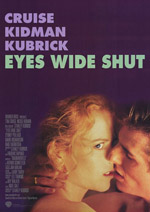 It’s not often I get to start a blog post with a warning so I’m going to take full advantage of this. Ahem.. Viewers are advised that this blog post contains 7 f**ks, 1 t**t, a b***h, a c**t (sorry), discussion of illegal acts and some really shocking graphs. You have been warned (or enticed, if that’s what you’re after).
It’s not often I get to start a blog post with a warning so I’m going to take full advantage of this. Ahem.. Viewers are advised that this blog post contains 7 f**ks, 1 t**t, a b***h, a c**t (sorry), discussion of illegal acts and some really shocking graphs. You have been warned (or enticed, if that’s what you’re after).
- Overview of the BBFC
- The certifications
- Swearing, violence and sex
- Difference between American and UK UK film censorship
- Figures for UK film censorship broken down by certification
Raters gonna rate
 The UK film censorship ratings system is managed by the British Board of Film Classification (BBFC). The BBFC is not run by the government; it’s a private company funded by the film industry (2012 turnover = £6 million). The final decision on which films can be screened to the public lies with the local councils but in almost all cases they follow the BBFC’s recommendations. The most recent public dissent was Westminster Council’s 1997 ban of David Croneberg’s ‘Crash‘ despite the BBFC awarding it an 18 certificate.
The UK film censorship ratings system is managed by the British Board of Film Classification (BBFC). The BBFC is not run by the government; it’s a private company funded by the film industry (2012 turnover = £6 million). The final decision on which films can be screened to the public lies with the local councils but in almost all cases they follow the BBFC’s recommendations. The most recent public dissent was Westminster Council’s 1997 ban of David Croneberg’s ‘Crash‘ despite the BBFC awarding it an 18 certificate.
Back to Top
Speed rating
Here is a very brief rundown of the certificates. More details can be found on the BBFC website.  Universal – Suitable for all ages. No bad language, no drugs and no sex (although you can allude to “making love”, which is rather sweet).
Universal – Suitable for all ages. No bad language, no drugs and no sex (although you can allude to “making love”, which is rather sweet).
 Parental Guidance – Everyone is admitted but some scenes might not be suitable for children under eight. You can have some mild bad language (they don’t mean split infinitives), mild sex/drugs references and moderate violence if justified by the context. Most are aimed at children or families but not all, such as ‘The Artist‘.
Parental Guidance – Everyone is admitted but some scenes might not be suitable for children under eight. You can have some mild bad language (they don’t mean split infinitives), mild sex/drugs references and moderate violence if justified by the context. Most are aimed at children or families but not all, such as ‘The Artist‘.
 12A – Kids under 12 must be with an adult, meaning parents can use BBFCinsisght to decide if it’s suitable for their child. Films in cinemas get the 12A rating while DVDs receive a 12. The first major 12A was ‘Spiderman‘ in 2002. The BBFC were accused of creating the 12A to appease the major Studios wanting the lucrative pre-teen audience, although the BBFC point to society’s changing morals.
12A – Kids under 12 must be with an adult, meaning parents can use BBFCinsisght to decide if it’s suitable for their child. Films in cinemas get the 12A rating while DVDs receive a 12. The first major 12A was ‘Spiderman‘ in 2002. The BBFC were accused of creating the 12A to appease the major Studios wanting the lucrative pre-teen audience, although the BBFC point to society’s changing morals.
 15 – No-one under 15 is admitted. A 15 can have hard drugs, frequent strong language, strong violence, strong sexual reference and nudity (without graphic detail). In short, all the things that made up a good Saturday night. Interestingly, the tone and themes of the film are not relevant for a 15, as opposed to 12A films which cannot be “very dark or unsettling”.
15 – No-one under 15 is admitted. A 15 can have hard drugs, frequent strong language, strong violence, strong sexual reference and nudity (without graphic detail). In short, all the things that made up a good Saturday night. Interestingly, the tone and themes of the film are not relevant for a 15, as opposed to 12A films which cannot be “very dark or unsettling”.

18 – No-one under 18 is admitted. Very few limits on language, violence, sex and gore.
 Restricted – Only to be shown in licensed sex cinemas. I’m not going to list the types of things that are only permitted in an R18 because, well, frankly they’re disgusting. It’s great that we’re not censoring them but I’m also glad that they have to be shown in different cinemas to the ones I regularly sit in.
Restricted – Only to be shown in licensed sex cinemas. I’m not going to list the types of things that are only permitted in an R18 because, well, frankly they’re disgusting. It’s great that we’re not censoring them but I’m also glad that they have to be shown in different cinemas to the ones I regularly sit in.
Back to Top
“Fuck you”, “Fuck me” and “Let’s Fuck him up” in UK film censorship
The three biggest factors in awarding a rating is bad language, sexual content and violence. Other factors include drug use, discriminatory behaviour and instructional actions of illegal activities. Overall, even an 18 rated film must not “promote or encourage drug misuse”. 
Bad Language – Moderate bad language is allowed in 12A films such as “bitch” and “twat” as well as infrequent “fuck”s, if the context is right. Aggressive use of “fuck” is more for a 15 rated film. Rather hilariously, the BBFC states that “there is some allowance for puns on strong language”. 15 rated films have “no upper limit on the number of uses of strong language” such as “fuck”. The strongest word (i.e. “cunt”) is a little more regulated, with occasional use permitted in a 15 but continued or aggressive use will result in the film being rated 18.
 Sexual content – One of the criteria as to whether a mild sexual reference is permitted in a PG film is if a child would understand the reference. This means that this could be the only criteria which is actually getting stricter with time due to children’s increasing access to online filth! The sex in a 12A “may be briefly and discreetly portrayed” while a 15 must contain “no strong or graphic detail”. 18 rated films can have almost anything, even real sex, so long as “the film is not a sex work”.
Sexual content – One of the criteria as to whether a mild sexual reference is permitted in a PG film is if a child would understand the reference. This means that this could be the only criteria which is actually getting stricter with time due to children’s increasing access to online filth! The sex in a 12A “may be briefly and discreetly portrayed” while a 15 must contain “no strong or graphic detail”. 18 rated films can have almost anything, even real sex, so long as “the film is not a sex work”.
 Violence – U films can have brief fight scenes or moments of danger. However moments of emotional stress must be “quickly resolved and the outcome will be reassuring”. Lionsgate removed seven seconds from ‘The Hunger Games‘ to omit “splashes of blood” to allow a 12A rating. A 15 allows strong violence but cannot dwell on pain or injury, it cannot be sadistic or sexualised and “easily accessible weapons may not be glamorised”. In an 18 all bets are off which means “there may even be dwelling on the infliction of pain or injury, or scenes of strong sadistic or sexual violence”. Lovely.
Violence – U films can have brief fight scenes or moments of danger. However moments of emotional stress must be “quickly resolved and the outcome will be reassuring”. Lionsgate removed seven seconds from ‘The Hunger Games‘ to omit “splashes of blood” to allow a 12A rating. A 15 allows strong violence but cannot dwell on pain or injury, it cannot be sadistic or sexualised and “easily accessible weapons may not be glamorised”. In an 18 all bets are off which means “there may even be dwelling on the infliction of pain or injury, or scenes of strong sadistic or sexual violence”. Lovely.
Back to Top
Difference between American and UK film censorship
 The BBFC treats heterosexual and homosexual sex and sexual references the same, which sadly cannot be said for the American rating system. There is a terrific documentary called ‘This Film Is Not Yet Rated‘ about the US system which goes into more detail on this topic. Broadly speaking, we Brits care more about violence than about sex. ‘Eyes Wide Shut‘ was passed uncut in the UK but in the US digital characters were added in post production to obsure some of the sex. If the line is “I’m going to fuck you good” then the Americans are hoping for a kicking and the British expect low lighting and oysters. Another good case study in differing censorship morals can be found in the difference between the BBFC and the MPAA’s treatment of Lars von Trier‘s Antichrist
The BBFC treats heterosexual and homosexual sex and sexual references the same, which sadly cannot be said for the American rating system. There is a terrific documentary called ‘This Film Is Not Yet Rated‘ about the US system which goes into more detail on this topic. Broadly speaking, we Brits care more about violence than about sex. ‘Eyes Wide Shut‘ was passed uncut in the UK but in the US digital characters were added in post production to obsure some of the sex. If the line is “I’m going to fuck you good” then the Americans are hoping for a kicking and the British expect low lighting and oysters. Another good case study in differing censorship morals can be found in the difference between the BBFC and the MPAA’s treatment of Lars von Trier‘s Antichrist
Back to Top
Come again?
 The BBFC are no strangers to controversy. They banned any sight of nunchucks (which are a controlled weapon in the UK) including nunchuck-esque use of a string of sausages in the 1990 classic ‘Teenage Mutant Ninja Turtles‘. The full cuts in that film have been diligently logged here, along with screenshots. They also have come under fire from feminists groups over their refusal to acknowledge the existence of female ejaculation. The BBFC say that they are following medical advice but the outcome is that footage of female ejaculation is classed urolagnia and banned due to the Obscene Publications Act 1959.
The BBFC are no strangers to controversy. They banned any sight of nunchucks (which are a controlled weapon in the UK) including nunchuck-esque use of a string of sausages in the 1990 classic ‘Teenage Mutant Ninja Turtles‘. The full cuts in that film have been diligently logged here, along with screenshots. They also have come under fire from feminists groups over their refusal to acknowledge the existence of female ejaculation. The BBFC say that they are following medical advice but the outcome is that footage of female ejaculation is classed urolagnia and banned due to the Obscene Publications Act 1959.
Back to Top
Exempt from UK film censorship classification
Some films do not require classification, such as films “which are primarily to inform, educate or instruct as opposed to entertain”. Distributors of such films sometimes use an ‘E’ certificate, although this is not a rating and is nothing to do with the BBFC. Over the last 10 years, these have never been more than 5% UK cinemas releases by number and account for under 0.2% of total box office gross (according to BFI figures). On May 24 2013 the Government announced that following a review of the Video Recording Act, the threshold at which video works are exempt from classification would be lowered so that those unsuitable for younger children (those under 12) will be classified by the BBFC, with new legislation taking effect in 2014.
Back to Top
What rating are the films on release?
Below is a graph I’ve created from data gathered by the UK Film Council (UKFC) and the British Film Institute (BFI). N.B. The UKFC was taken over by the BFI in 2011.
We can see that the vast majority of films subject to UK film censorship are rated 15. Between 2004 and 2011 the average was U – 6%, PG – 16%, 12A – 28%, 15 – 40% and 18 – 10% But that’s not the full story. This shows the number of films but says nothing for how popular these films were. So I’ve collated the figures for the same films but this time as a percentage of the total box office in its year of release.
This reveals a very different picture compared with the UK film censorship data for the number of films released. Only a quarter of the total box office gross was earned by 15 and 18 rated films. Between 2004 and 2011 the average was U – 14%, PG – 19%, 12A – 40%, 15 – 23% and 18 – 5%
BFI and BBFC disagree by up to 39 percent
Interestingly the figures published by the BBFC and the BFI don’t match up. And the difference is as much as 39%. According to the BBFC in 2002 they rated 585 films for a theatrical release whereas the UKFC’s said that there were only 359 films with certificates.
It strikes me that the most likely reason is that some films are submitted for certification and then not actually released in cinemas. Which is strange because it’s not cheap (around £1,000 for a feature film) and all films need to be reviewed again for DVD release (i.e. you can’t just use the certificate they gave you for cinema release). This means people are paying for a rating and then not using it. Another possible reason is a different counting method. I spoke to the BBFC and they say that their numbers are based on internal records of how many films are physically rated. They said they “could not account for how the BFI is sourcing their data”. The BFI say that their data relates to “Releases in UK and Republic of Ireland of BBFC film classification” and credit the data to Rentrak EDI, their own Research and Statistics Unit and, surprisingly, the BBFC.
Back to Top
Notes
The UK Film Council Statistical Yearbook for 2003 did not break down releases by certificate. The latest figures from the BFI relate to 2011 whereas the BBFC have already published their 2012 figures. It’s for these reasons that I chose to look at the period 2004 – 2011.
Sources
- UK Film Council / BFI Statistical Yearbooks
- BBFC website
- BBFC Annual Reports
- BBFC classification guidelines
- BBFC’s timeline of Violence and Weapons
- Wikipedia
- Melon Farmers Despite the strange name and slightly-dodgy advertising, this site is a great resource for anyone interested in the work of the BBFC.
- “Violence in the History of the BBFC” (A look at their rating decisions relating to violence rather than a record of fist fights in the BBFC offices).
- I spoke to the BBFC on the ‘phone.
- I have emailed both the BFI and the BBFC to ask a few follow up questions with a link to this post. I will update the post with any new information this provides, and will happily correct any errors.





Comments
Great blog!
I heard a story (maybe urban legend) about the BBFc and nun-chucks. As I remember it, the story goes that a young BBFC examiner disagreed with BBFC director James Ferman’s policy that martial arts weapons depicted in film were harmful to the public. To make his point, he stood up during a board meeting voiced his objections and produced a set of nunchucks from his bag and started to swing them around. The chain became wrapped around his neck and one of the sticks knocked him out.
The story does sound rather fanciful and apocryphal, but could be an embellished account of a true incident.
Chris,
I heard that story too and I tried to find a source for it. I asked the BBFC about it and they said…
I'm afraid I can't find anything that backs up the story about the Examiner with the chainsticks! As you probably know, throughout the 1990s, specific public concerns about chainsticks declined, while fears about more accessible weapons, such as knives, grew and there was a modification to the BBFC’s blanket ban of martial arts weaponry in 1991.Then after the large scale public consultation and review of the Guidelines in 1999, the previous distinction between martial arts and other weapons was abandoned entirely in favour of a more context-based, proportionate approach.Shame, it’s a good story!
The BBFC does not have absolute right under UK law to age rate anything for public screening in cinemas, other videos and DVDs for home view. The latter bought about by further parliamentary act in 1984, after a very vocal media campaign in the wake of a perceived link between video violence and real-life violence, the Video Recordings Act 1984 gives the BBFC responsibility for classifying, cutting and sometimes banning videos. Moreover, the release of any video not classified becomes a criminal offence.
Note: under UK law, County and local councils have the ultimate right to age rate films for public screening. Yes, the BBFC has a Royal Charter, a non-changeable monopoly to represent the film industry on age rating films. This is why they are able to pay a minimum wage to 2 film students to watch a 90 minute film and put ticks on ‘monkey’ sheets, and then charge film makers over £1000 for a certificate that cost just £30.00 to view and censor. All the directors (and there are quite a few) earn over £100,000 a year. Disney launching a 100 million dollar film are charged the same amount as a budding low budget independent film maker’s creation costing £15.000. It’s high time this unfair and basic gravy-train, money making organisation was disbanded and the right to censorship of any film is de-monopolised so it becomes a competitively priced requirement. I am a UK film maker and I’m forced to always release my films via Streaming sites like Amazon, and the BBFC (last time I looked_) were trying to get in on that act too.
In this time of people realising how elitism, old-boy networks, and the public school connected establishment operate to gather money for their own pockets, it’s time for a bit of modern restructuring of bodies put into place over 100 years ago and bring them up to date with fairer and more just modes of operation. Low budget film makers should write to their local and regional county councils and insists they age rate their movies so they can show them in local cinemas.